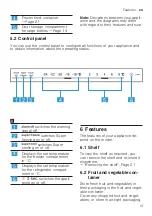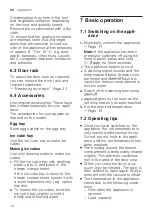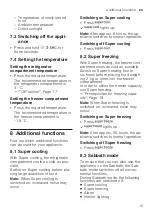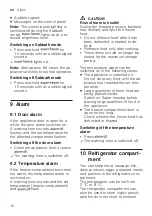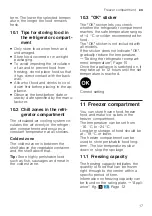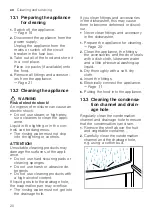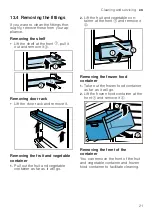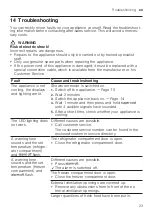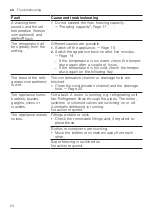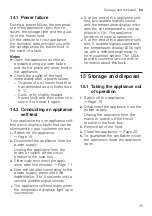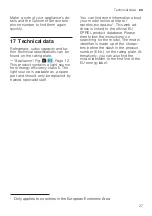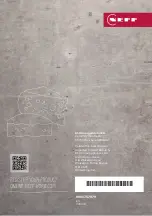
Storage and disposal
en
25
14.1 Power failure
During a power failure, the temperat-
ure in the appliance rises; this re-
duces the storage time and the qual-
ity of the frozen food.
On the website for your appliance,
the technical data provides you with
the storage times for frozen food in
the event of a fault.
Notes
¡
Open the appliance as little as
possible during a power failure
and do not place any other food in
the appliance.
¡
Check the quality of the food
immediately after a power failure.
–
Dispose of any frozen food that
has defrosted and is hotter than
5 °C.
–
Cook or fry slightly thawed
frozen food, and then either con-
sume it or freeze it again.
14.2 Conducting an appliance
self-test
Your appliance has an appliance self-
test which displays faults that can be
eliminated by your customer service.
1.
2.
Disconnect the appliance from the
power supply.
Unplug the appliance from the
mains or switch off the circuit
breaker in the fuse box.
3.
Electrically reconnect the appli-
ance after five minutes. →
4.
One minute after connecting to the
power supply, press and hold
for 3 to 5 seconds until a
second audible signal sounds.
a
The appliance self-test starts when
the temperature displays light up in
succession.
a
If, at the end of the appliance self-
test, two audible signals sound
and the temperature display indic-
ates the set temperature, your ap-
pliance is OK. The appliance
switches to normal operation.
a
If, at the end of the appliance self-
test, 5 audible signals sound and
the temperature display LEDs light
up with a different brightness, in-
form customer service. The LEDs
provide customer service with in-
formation about this fault.
15 Storage and disposal
15.1 Taking the appliance out
of operation
1.
2.
Disconnect the appliance from the
power supply.
Unplug the appliance from the
mains or switch off the circuit
breaker in the fuse box.
3.
Remove all of the food.
4.
5.
To guarantee the ventilation inside
the appliance, leave the appliance
open.



